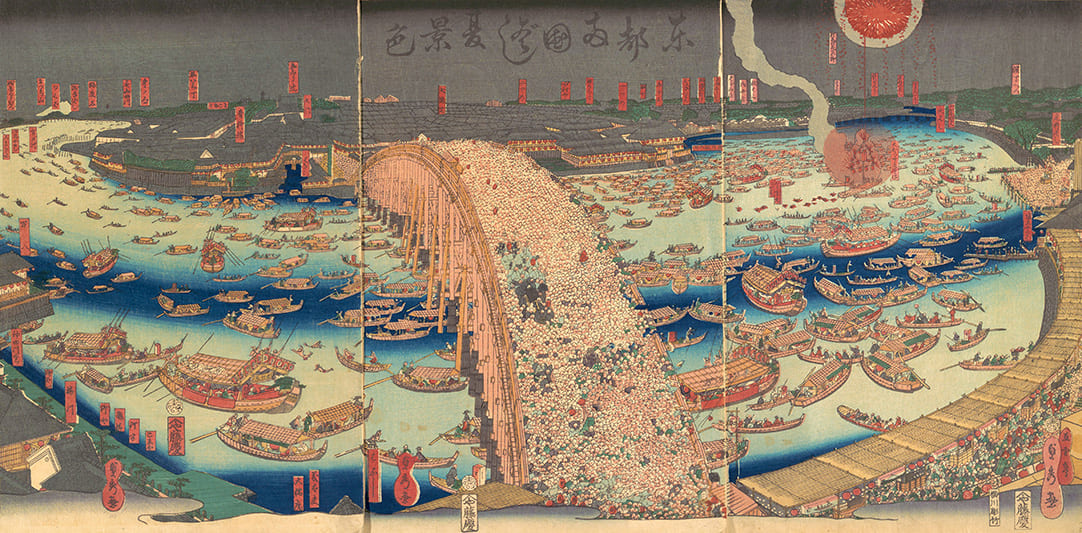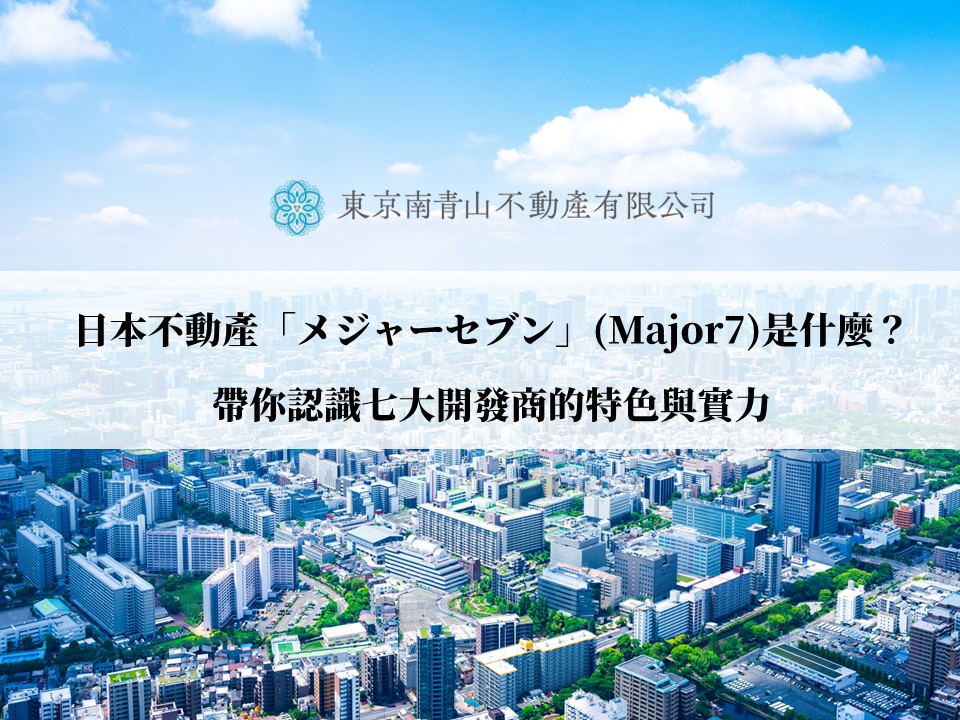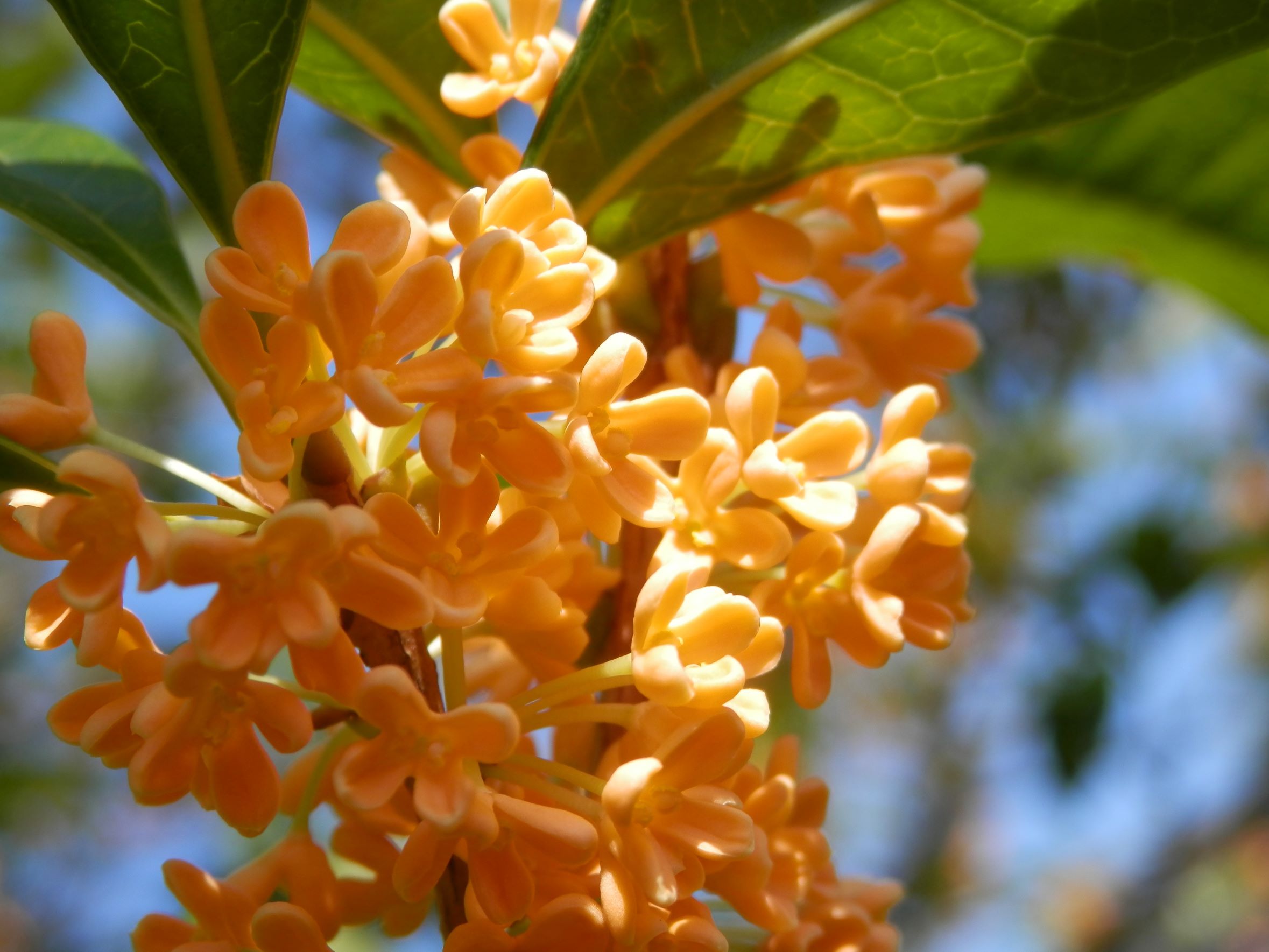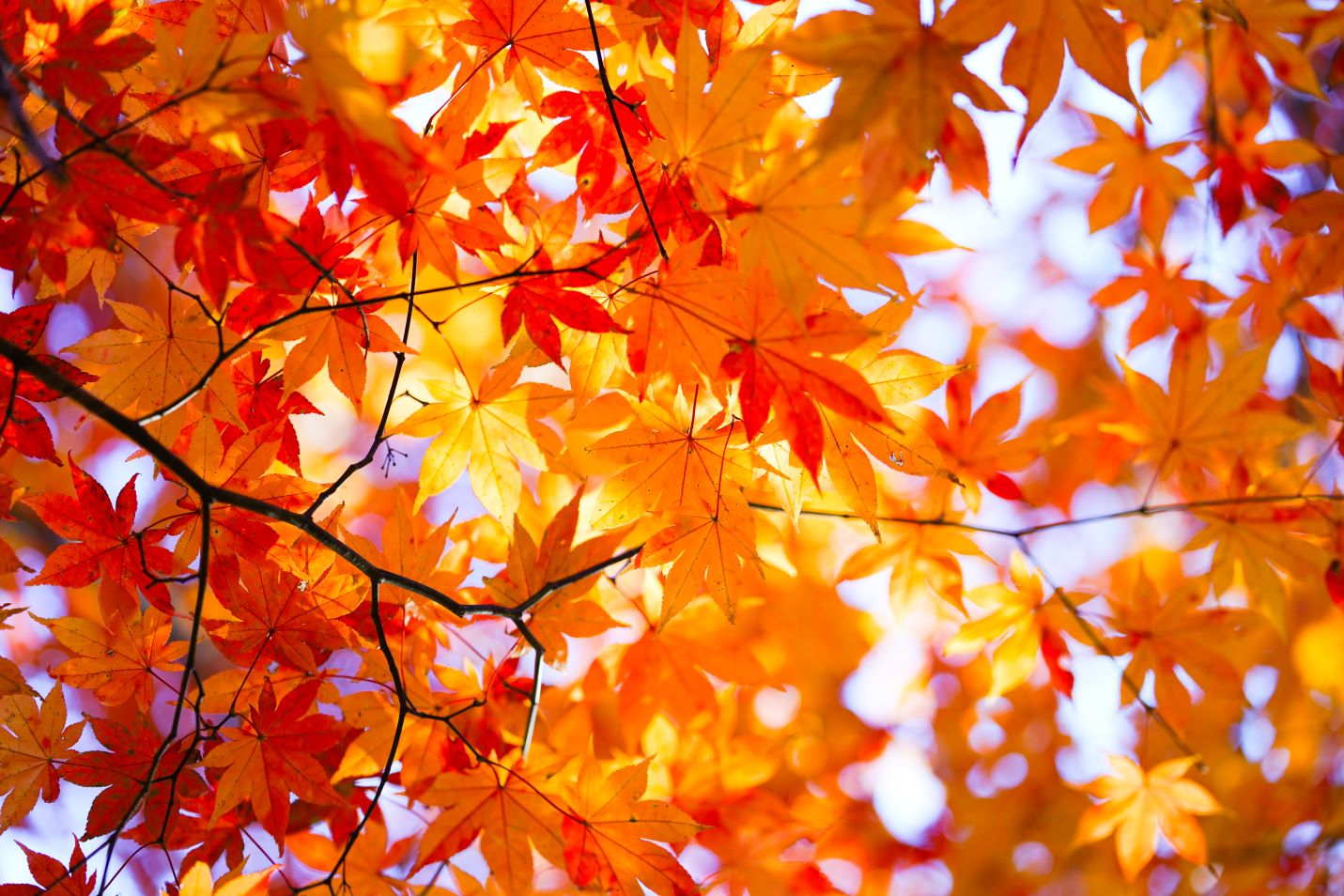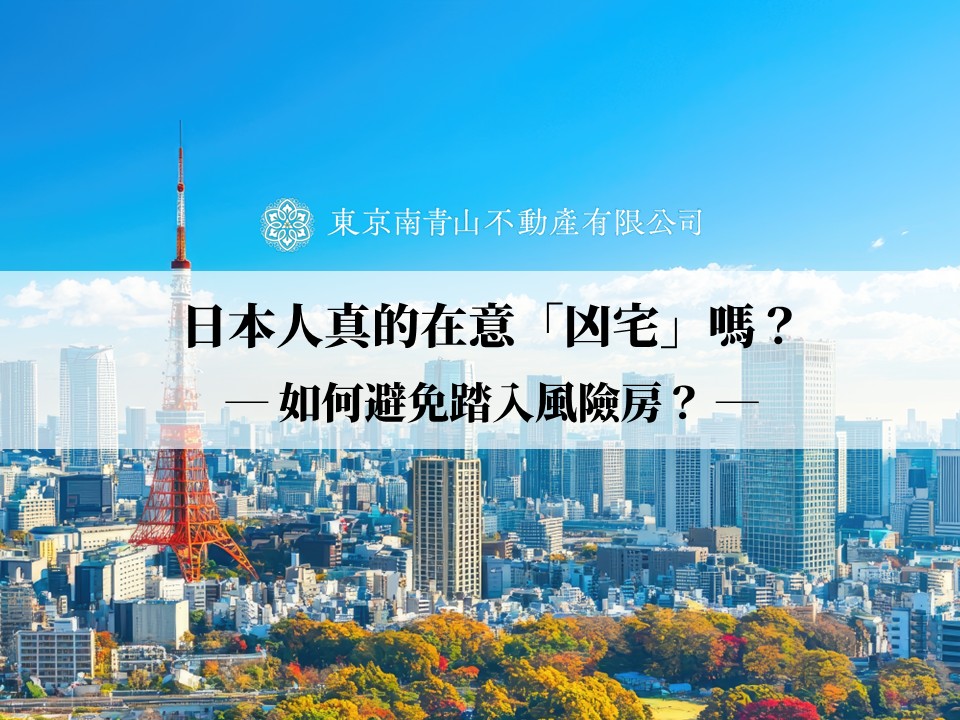The current Sumida Ward can be roughly divided into the former Honjo area, which developed as part of the town of Edo from the Edo period, and the former Honjo area, which developed as a recreational area during the Edo period and as an industrial area after the Meiji period. Consists of the Mukojima area. In 1947, Sumida Ward was created from the former Honjo Ward and Mukojima Ward.
In ancient times, it was a shipping hub near the center of Edo, and since the Meiji period, it has developed as a key logistics hub where shipping and rail freight intersect. Utilizing the site of a former vast freight station, Sumida Ward's current representative facilities such as Tokyo Skytree®, Ryogoku Kokugikan, and Edo-Tokyo Museum have been built.
Even today, Sumida Ward offers a variety of attractions while preserving its tradition and history from the Edo period. There are also plenty of leisure and commercial facilities, including the beautiful riverside scenery of the Sumida River, the popular Sumida River Fireworks Festival, and the Tokyo Skytree®. It is also attracting attention for its cultural and artistic aspects, as it was once the home of ukiyo-e artist Katsushika Hokusai.
Also ranked 1st in the ranking of Tokyo's 23 wards with the most active neighborhood relationships, as selected by female Tokyo residents.
(2022 Netorabo Research Team) and other activities are active among the residents. It is a city with a variety of charms that is visited by people of all ages and loved by the people who live there.
Here, we will introduce the former Honjo area as the "Honjo area" and the former Mukaijima area as the "Mukojima area."
Tokyo Skytree®
Sumo flag at Ryogoku Kokugikan
■1 “Honjo/Mukojima area” until early modern times
The Honjo area was once a tidal flat and wetland, so many ancient historical sites can be found in the Mukojima area. For example, ``Ushijima Shrine'' is said to have been founded in 860, and ``Mokubo-dera'' was founded in 976, and the area around ``Mokumo-dera'' is said to have been a ``Sumida-juku'' on the ancient Tokaido.
In the Honjo area, land reclamation began as the city expanded in the early Edo period, and especially after the Great Meireki Fire of 1657, which destroyed more than 60% of the city of Edo, the city was expanded for disaster prevention purposes. Land reclamation in the ``Honjo area'' has progressed further. Ryogoku Bridge, which connects the center of Edo and the Honjo area, will also be bridged, and the plaza at the foot of the bridge will become a downtown area called Ryogoku Hirokoji. As it became part of the town of Edo, culture developed, and many cultural figures, including Katsushika Hokusai, lived here.
The Mukojima area is located to the north of the Honjo area. Mukaijima (Mukaijima) is the land on the other side of the Sumida River from Asakusa, which has been a busy area since the Edo period, and flourished as a picturesque suburban resort. There was also a restaurant, and it is said that entertainment tourists at the time came on ferryboats together with geisha from the Asakusa side, such as Shin-Yoshiwara.
The cherry blossoms on Sumidumi (levee along the Sumida River) in the Mukojima area date back to the Kanbun era (1661-1673) when the fourth shogun, Ietsuna Tokugawa, had them planted around Mokumoji Temple. It is said that in 1717, the eighth shogun Tokugawa Yoshimune planted 100 cherry trees in order to make it a recreational area for the common people. It was said to be the best cherry blossom viewing spot in Edo, and was a lively place where people gathered.
Cherry blossoms on Mukojima's Sumizumi
■2 Early modern “Ryogoku”
In the early Edo period, the Shogunate did not allow any bridges other than the Senju Ohashi Bridge over the Sumida River (also known as the Okawa River or Asakusa River at the time) for defensive purposes. During the Great Fire of Meireki, many Edo townspeople had no place to escape due to the lack of a bridge, resulting in casualties, so the Great Bridge was built in 1659 (some say in 1661) for disaster prevention purposes. I did. In addition, a temple called Eko-in was built to hold a memorial service for the Buddha who was killed in the Great Fire.
"Ohashi" was commonly called "Ryogoku Bridge" because it was a bridge that spanned both "Musashi Province" and "Shimosa Province" until the border was changed in 1686. At that time, Ryogoku Bridge was made of wood, and to prevent fires from spreading, Ryogoku Hirokoji were created as fire protection areas at the base of the bridge on the east and west sides. Hirokoji, which used to be a plaza with no buildings, began to be lined with food stalls, street vendors, temporary spectacles, and theater huts, and became one of the busiest entertainment spots in Edo.
The Ryogoku area, which has been redeveloped as a city centered on samurai areas, was mainly home to the residences of hatamoto and gokenin, but it also included residences of feudal lords and senior hatamoto, such as the "Hirosaki domain Tsugaru family residence." I did. The mansion of Kira Uenosuke Yoshio, known for the "Ako Incident," is also located in Ryogoku, and was the scene of the raid by the "Ako Gishi."
As it was a key location for shipping, townspeople's quarters where craftsmen and merchants lived were also formed along canals such as Tatekawa.
Yoshio Kira Uenosuke's mansion is currently maintained as "Honjo Matsuzaka Town Park." In addition to the Gishi Festival that is held every year on December 14th, the day of the raid, the Kira Festival and Genroku City in December are crowded with people.
In the summer around Ryogoku Bridge on the Sumida River, a period of "Yuuyo" was established, during which restaurants were allowed to open at night and people were allowed to play in the river. It is said that "Evening Ryo" became popular during the Enpo era (1673-1681) in the early Edo period, and from 1733 onwards, large fireworks Ryogoku Fireworks, now known as "Sumida River Fireworks Festival") were held every year.) is now being launched.
“Tokyo Ryogokubashi Summer Scenery” (Metropolitan Museum of Art collection)
Ryogoku Bridge in the early Showa period
■3 Development of the “Honjo area” since the Meiji period
In the early Meiji period, the "Honjo area" became Honjo Ward and continued to develop as the center of Tokyo. ``Sumo'' began to be held in temporary huts in the precincts of ``Ekoin'' in Ryogoku from the Edo period, and became a very popular pastime. It has evolved into the current Sumo wrestling. In 1909, the permanent Kokugikan was completed, and after that, it was burnt down, rebuilt, and requisitioned, and the current Ryogoku Kokugikan opened in 1985.
By the middle of the Meiji period, the railway network was being developed. In 1894, the Sobu Railway opened and the ``Honjo Station'' (currently ``Kinshicho Station'') opened, and in 1904 it was extended to ``Ryogokubashi Station'' (currently ``Ryogoku Station''). Both stations were built to accommodate boat transportation, and developed as freight stations where transshipment between boats and railroads was possible.
Tobu Railway also opened Azumabashi Station as a freight station in 1908. In 1910, the name was changed to ``Asakusa Station'' (first generation, later ``Narihirabashi Station''), but even though it was called ``Asakusa Station,'' it was located on the opposite bank of Asakusa, just before crossing the Sumida River. It had a vast cargo yard, from which cargo collected from along the Tobu Railway lines was transported to various locations by boat. The freight yard at Narihirabashi Station was closed in 1993, and Tokyo Skytree was built on the vast site owned by Tobu Railway, opening in 2012.
Since the Meiji period, the "Honjo area" has also developed as an industrial area.
For example, in the mid-Meiji period, Hattori Watch Store established Seikosha, a manufacturing division in the Honjo area, and developed into the current Seiko brand. The site of the factory is now the commercial complex Olinas.
"Sapporo Beer" (the predecessor of the current "Sapporo Beer") built a beer factory east of "Azumabashi" and began brewing in 1903. After the merger, it became Dainippon Beer, and after the war it became the factory of Asahi Beer (currently Asahi Beer). Currently, the factory has been abolished and redeveloped into "Asahi Beer Tower" and "Super Dry Hall."
Ryogoku Kokugikan
Tokyo Skytree and Asahi Beer Tower
■4 Development of the Mukaijima area since the Meiji period
The Mukojima area has been a scenic entertainment area since the Edo period, and entertainment tourists came by ferry along with geisha from Asakusa, such as Yoshiwara. In the Meiji period, a guard was placed in the area and it developed into a red light district. It reached its peak in the prewar period, and although it has declined since then, it still has 90 geisha, making it the largest in Tokyo and the largest in Japan, and has inherited the tradition and culture of the red light district.
During the Edo period, local industries such as tiles, dyeing, lumber, and casting developed due to the use of water from the Sumida River and canals, and after the Meiji period, the Mukojima area also developed as an industrial area. Particularly large-scale companies include "Kanebuchi Spinning" (later "Kanebo"), which took the name of Kanegafuchi and grew into one of Japan's leading companies.
Boating competitions have been popular on the Sumida River since the Meiji era. In particular, inter-university sailing regattas started in 1883 (Meiji 16) and became very popular. Takeshima Hagoromo, the lyricist of "Flower" published by Rentaro Taki in 1900, wrote: "The water droplets from the oars are scattered like flowers as the boatmen get up and down," which is describing the appearance of a rowing race on the Sumida River.
Sumida River (the boat reflected in the center is the regatta)
Sumida River Boat Monument
■5 Current Sumida Ward and recent developments
Sumida Ward has a tradition of craftsmen that has continued since the Edo period and a history of industrial development since the Meiji period, and today it is moving toward a future filled with new attractions. A large residential area has been created on the site of a former large factory that was moved outside the ward, giving the city the appearance of a new residential city. However, on the other hand, many small and medium-sized factories and traditional craft workshops remain, and the spirit of the city as a manufacturing town is still alive.
In addition to popular facilities such as Ryogoku Kokugikan and Edo-Tokyo Museum, Sumida Ward is rapidly becoming a new hub for tourism with the opening of Tokyo Skytree® and the Sumida Hokusai Museum in recent years. Furthermore, the appeal of Sumida Ward is expanding further through initiatives aimed at becoming an "international tourist city," and the promotion of "meta-tourism" that utilizes local information.
Improvements along the Sumida River are progressing, and the full opening of the Ryogoku River Center has increased the enjoyment of the waterfront, and the construction of the Super Embankment has improved safety. This symbolizes Sumida City's attitude of valuing harmony with nature while also not forgetting to prepare for the future.
In addition, in Sumida Ward, which was the only one of Tokyo's 23 wards without a university, the "Information Management Innovation Professional College" and "Chiba University Sumida Satellite Campus" were opened through the redevelopment of the Bunka district, taking a new step forward in terms of education. is taking steps. As a result, a new town development that harmonizes work, residence, study, and play is underway, and expectations for future development are high.
Katsushika Hokusai Museum (In addition to works collected by Sumida Ward, materials given to us by renowned researchers are on display)
Ryogoku River Center
■6 Tradition/Culture Mini Column “Edo Wooden Chopsticks”
Wooden chopsticks have been made in the current Sumida and Katsushika wards since the early Taisho period. The main shape is a rectangular shape, and the chopsticks are made from carefully selected precious woods (ebony, cypress, ironwood, boxwood, maple, etc.) that take advantage of the quality of the wood itself.
Katsuhiko Takeda, the founder of "Daikokuya" in Higashimukojima, Sumida Ward, registered "Edo wooden chopsticks" as a trademark in 1999, and the "Daikokuya" workshop and shop sells over 200 types of "Edo wooden chopsticks". ” are available.
An example of beautiful and functional
there are many types


